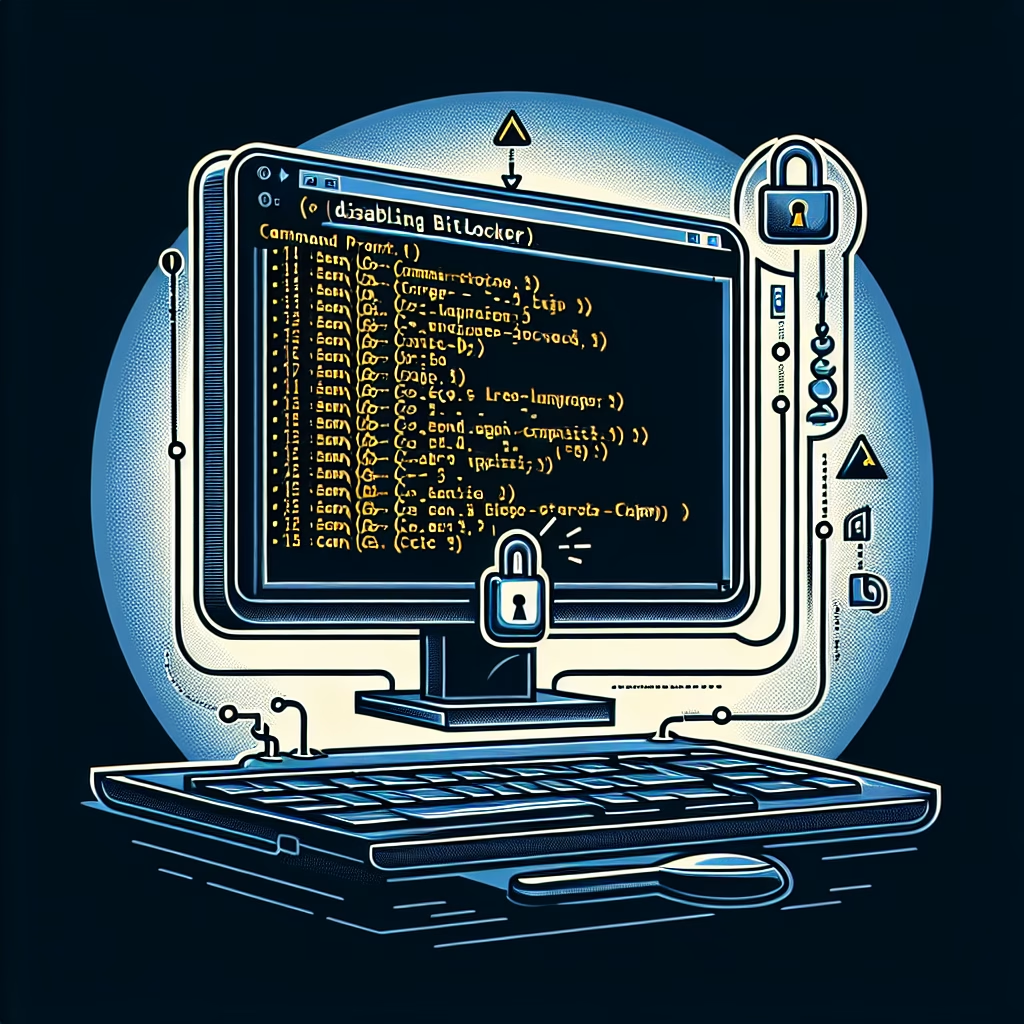Disable BitLocker Using Command Prompt
Summary:
Disabling BitLocker using Command Prompt is a technical method to turn off BitLocker Drive Encryption on Windows operating systems without relying on the graphical interface. This approach is useful when the GUI is inaccessible, troubleshooting encryption issues, or managing BitLocker in automated deployments. The process involves using the manage-bde command-line tool to decrypt the drive, remove encryption protection, and ensure data accessibility. Common scenarios include system migrations, hardware changes, or resolving BitLocker-related boot errors.
What This Means for You:
- Immediate Impact: Disabling BitLocker via Command Prompt removes encryption, making data temporarily vulnerable until re-enabled. Ensure physical security during this transition.
- Data Accessibility & Security: Decrypting the drive may expose sensitive data. Always back up critical files before proceeding.
- System Functionality & Recovery: Disabling BitLocker may affect system boot if improperly executed. Verify drive integrity afterward.
- Future Outlook & Prevention Warning: Avoid frequent toggling of BitLocker to prevent metadata corruption. Store recovery keys securely before making changes.
Explained: Disable BitLocker Using Command Prompt
Solution 1: Basic BitLocker Decryption
The simplest method to disable BitLocker is using the manage-bde command-line tool with the -off parameter. Open Command Prompt as Administrator and execute:
manage-bde -off C:
This initiates the decryption process for the C: drive. Monitor progress with:
manage-bde -status
The decryption may take significant time depending on drive size and system performance. Do not interrupt the process to avoid data corruption.
Solution 2: Force Decryption When Suspended
If BitLocker is in a suspended state, additional parameters may be required. First check suspension status:
manage-bde -status C: | find "Protection"
If suspended, use the forced decryption command:
manage-bde -off C: -Force
This bypasses certain protection checks. After completion, reboot the system to ensure changes take effect. Verify decryption status post-reboot.
Solution 3: Decryption with Recovery Key
When encountering authentication issues, specify the recovery key during decryption:
manage-bde -off C: -RecoveryPassword YOUR-RECOVERY-KEY
Replace “YOUR-RECOVERY-KEY” with the 48-digit numerical recovery key. This method is crucial when TPM authentication fails or after significant hardware changes. Store the recovery key securely before attempting this operation.
Solution 4: Advanced Troubleshooting for Stuck Decryption
For stalled decryption processes, first attempt to resume:
manage-bde -on C:
Then retry disabling:
manage-bde -off C:
If issues persist, check the BitLocker event log for errors:
eventvwr.msc (Navigate to Windows Logs > System)
Common resolvable errors include disk space limitations or conflicting security software terminating the decryption process prematurely.
People Also Ask About:
- Does disabling BitLocker erase data? No, decryption preserves all data while removing encryption protection.
- How long does BitLocker decryption take? Time varies by drive size and speed, typically 1 minute per GB for HDDs, faster for SSDs.
- Can I pause BitLocker decryption? Yes, but not recommended as paused decryption leaves data partially protected and vulnerable.
- Why does decryption fail with “parameter incorrect”? This usually indicates filesystem corruption; run
chkdsk /ffirst. - Is Administrator privilege required? Yes, elevated Command Prompt is mandatory for all manage-bde operations.
Other Resources:
- Microsoft Docs: manage-bde command reference – https://docs.microsoft.com/en-us/windows-server/administration/windows-commands/manage-bde
- BitLocker CSP technical documentation – https://docs.microsoft.com/en-us/windows/client-management/mdm/bitlocker-csp
Suggested Protections:
- Create a full system backup before disabling BitLocker
- Store recovery keys in multiple secure locations
- Ensure antivirus software is compatible with BitLocker operations
- Monitor system temperature during intensive decryption processes
- Document all command executions for troubleshooting purposes
Expert Opinion:
While Command Prompt offers powerful control over BitLocker, improper use can lead to unrecoverable encryption states. As a Windows security professional, I recommend maintaining detailed logs of all encryption state changes and always verifying successful completion through both status checks and system reboots. The trend toward more complex hardware-based security (TPM 2.0, Pluton) makes proper BitLocker management increasingly critical for enterprise environments.
Related Key Terms:
- BitLocker decryption
- manage-bde command
- TPM authentication
- BitLocker recovery key
- Windows drive encryption
- Command Prompt administration
- Full volume encryption
*Featured image sourced by DallE-3





